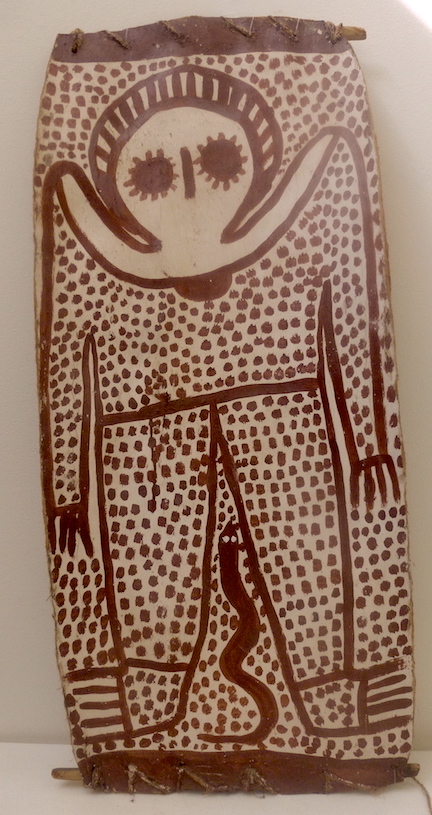Wanjina
Lily Karadada

Details
- Artist
- Lily Karadada
- Title
- Wanjina
- Medium
- ochre on bark
- Size
- 89 x 41 cm (irreg.)
- Stock Number
- 216139
Exhibited
Telling the Stories From the Kimberley to Yirrkala, Lauraine Diggins Fine Art, 2012
Further Information
The Wanjinas are ancestral spirits, which have a history of iconography originating in ancient rock art. The Wanjina come from North West Kimberley and are harbingers of the wet season. Wanjina is a collective term for ancestral beings from the sky and the sea. Wanjina are usually depicted in human form with white faces and bodies, with large round black eyes and no mouth, surrounded by a halo representing storm clouds, rain and lightning.
The Wanjina tradition is specific to three groups; the Worrorra, Ngarinyin and Wunambal people, who trace their descent from among the many Wanjina spirit ancestors associated with the landscape. Paintings of the Wanjina on bark are a relatively recent development, but produced regularly from 1975.
Lily Karadada was the most prolific member of a family of artists based at Kalumburu. Her works were created over a period of at least three decades and she specialised in representations on Wanjina executed in a sophisticated styles with subtle modulation of tone. Her Wanjina are usually depicted emerging from a veil of dots, representing rain, and are surrounded by animal and human figures, including the owlet nightjar, Jirrenggen, Lily’s moiety totem.
Lily’s representation of the Wanjina features a number of iconographic totems that are typical of traditional depictions of the Wanjina. The oval shape on the breast is thought to represent a pearl shell pendant typical of this region, but may also represent the heart or sternum.
